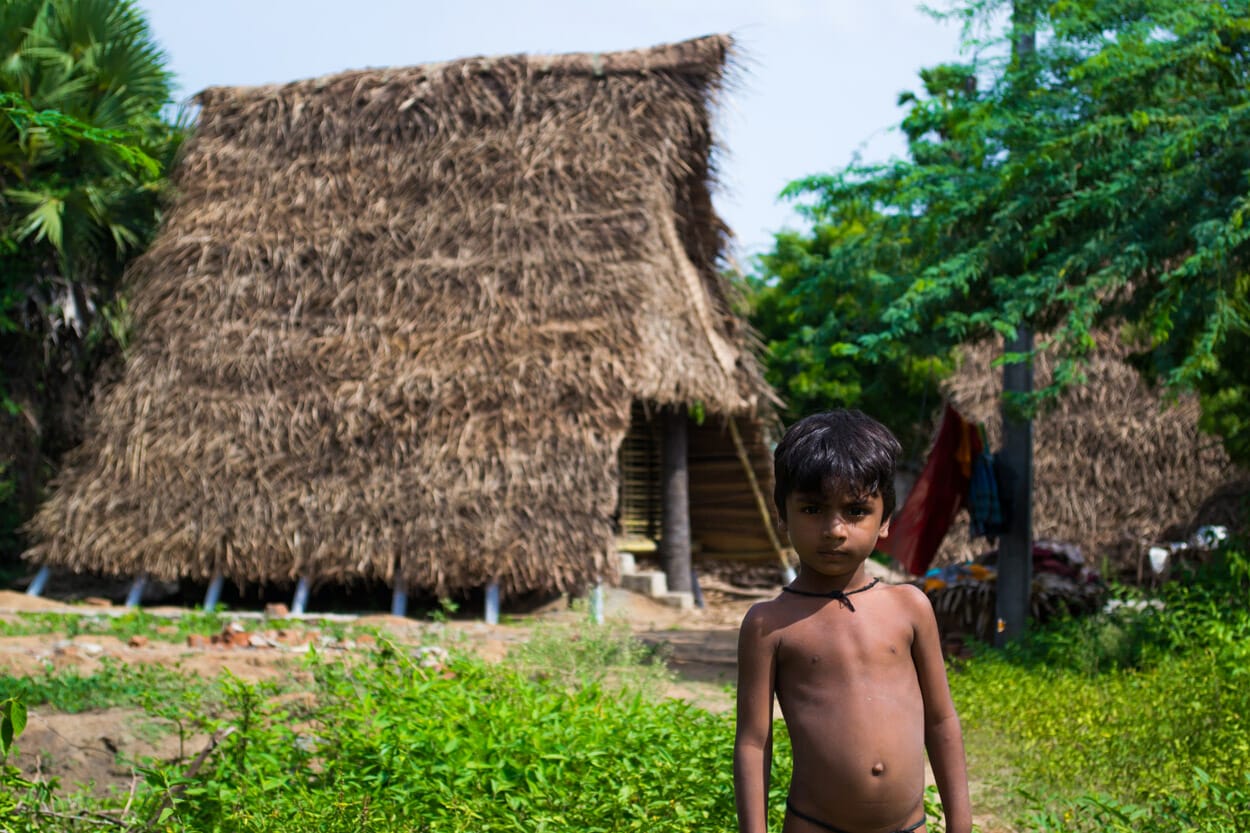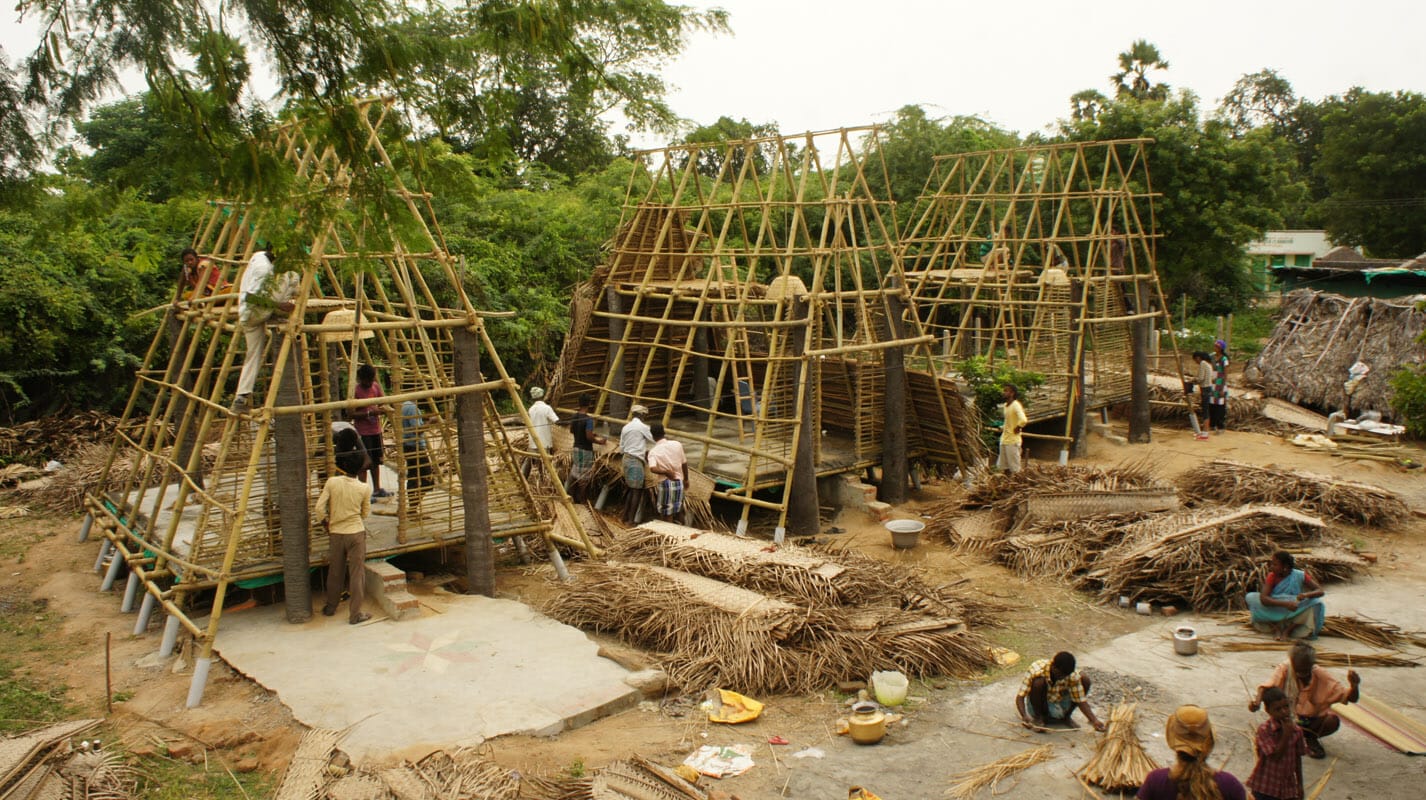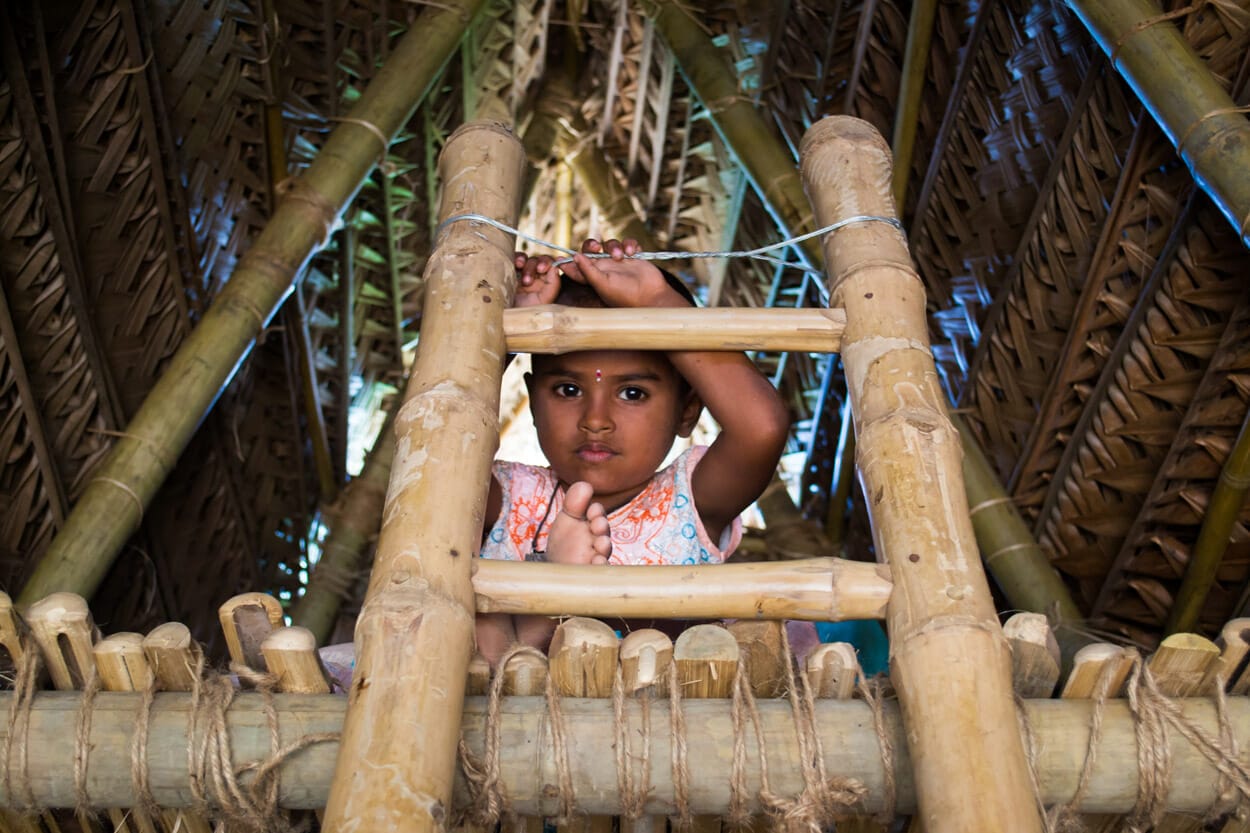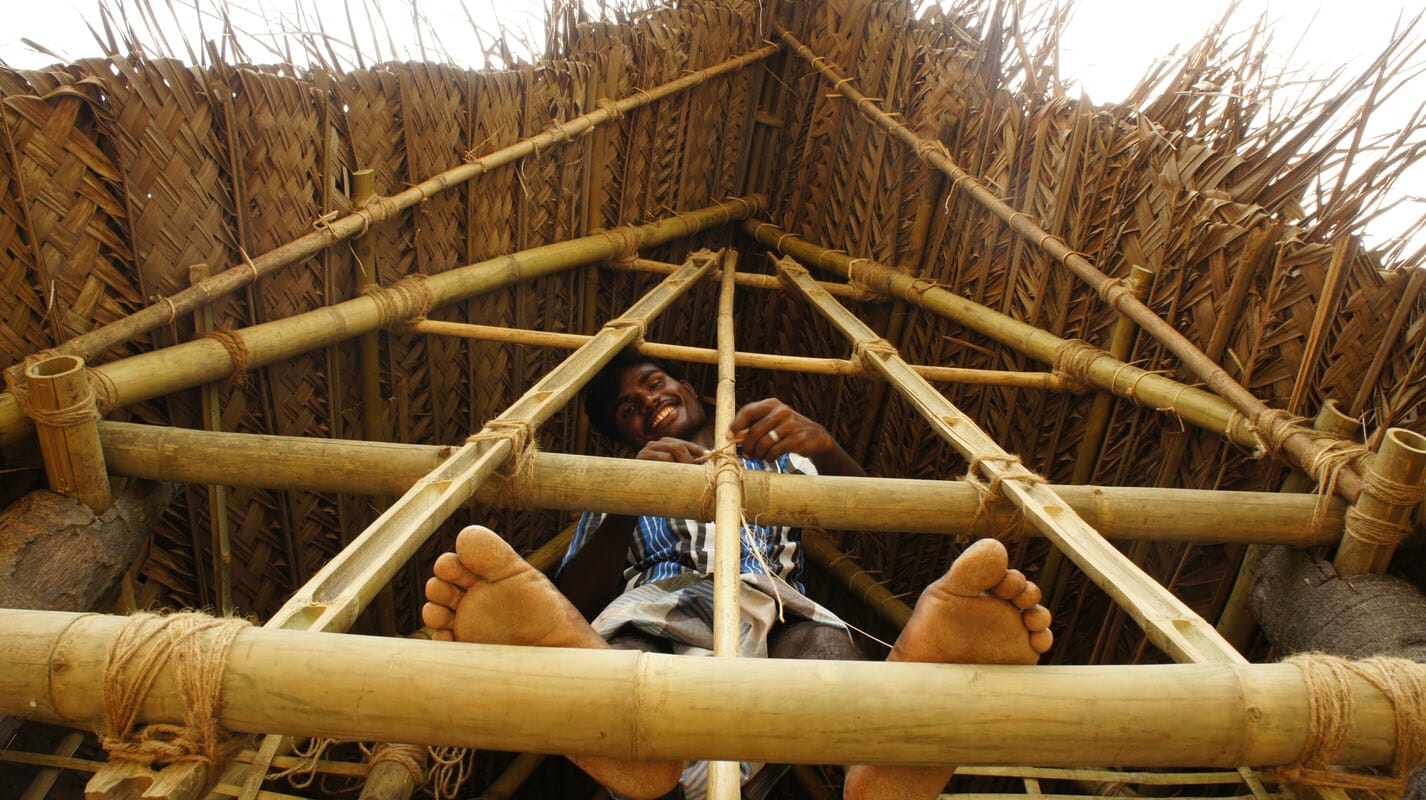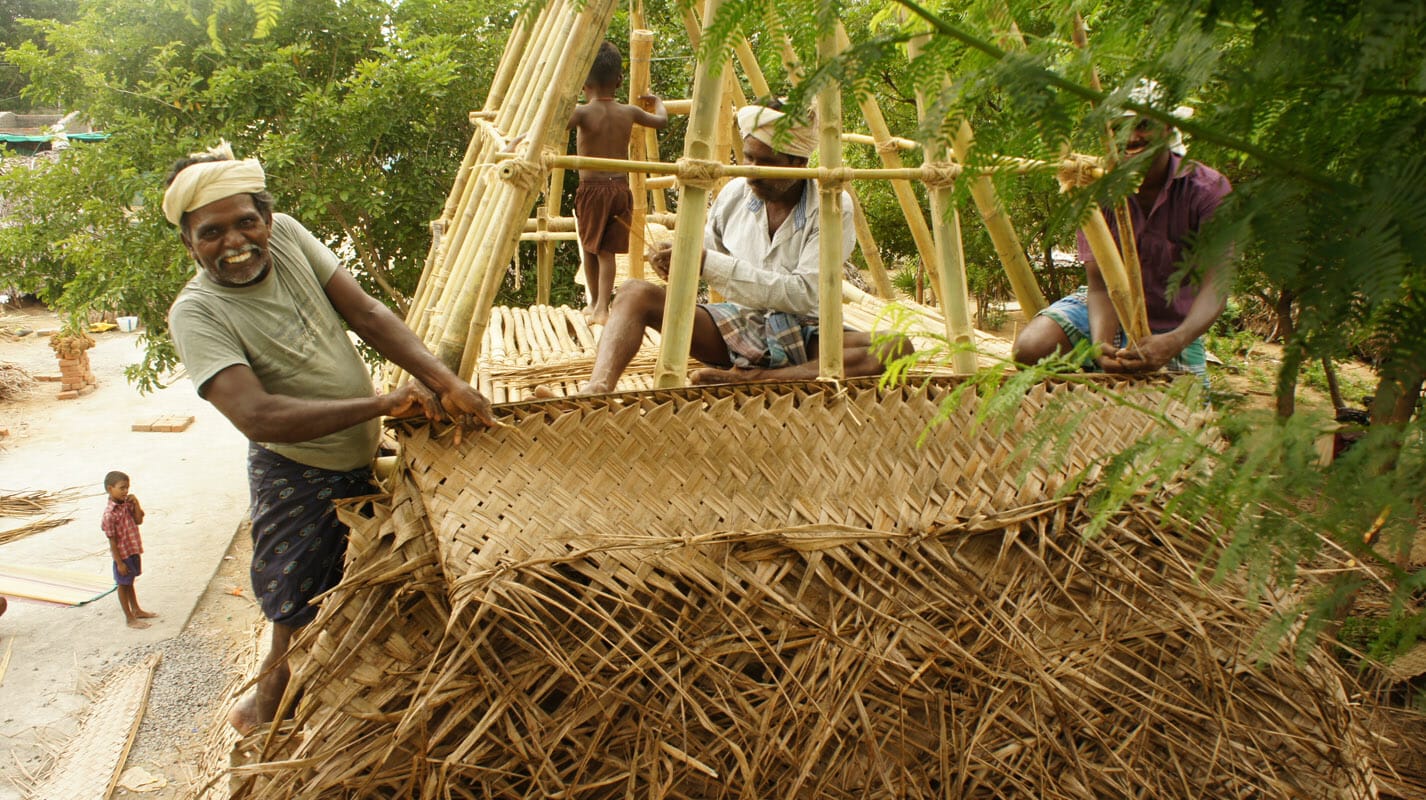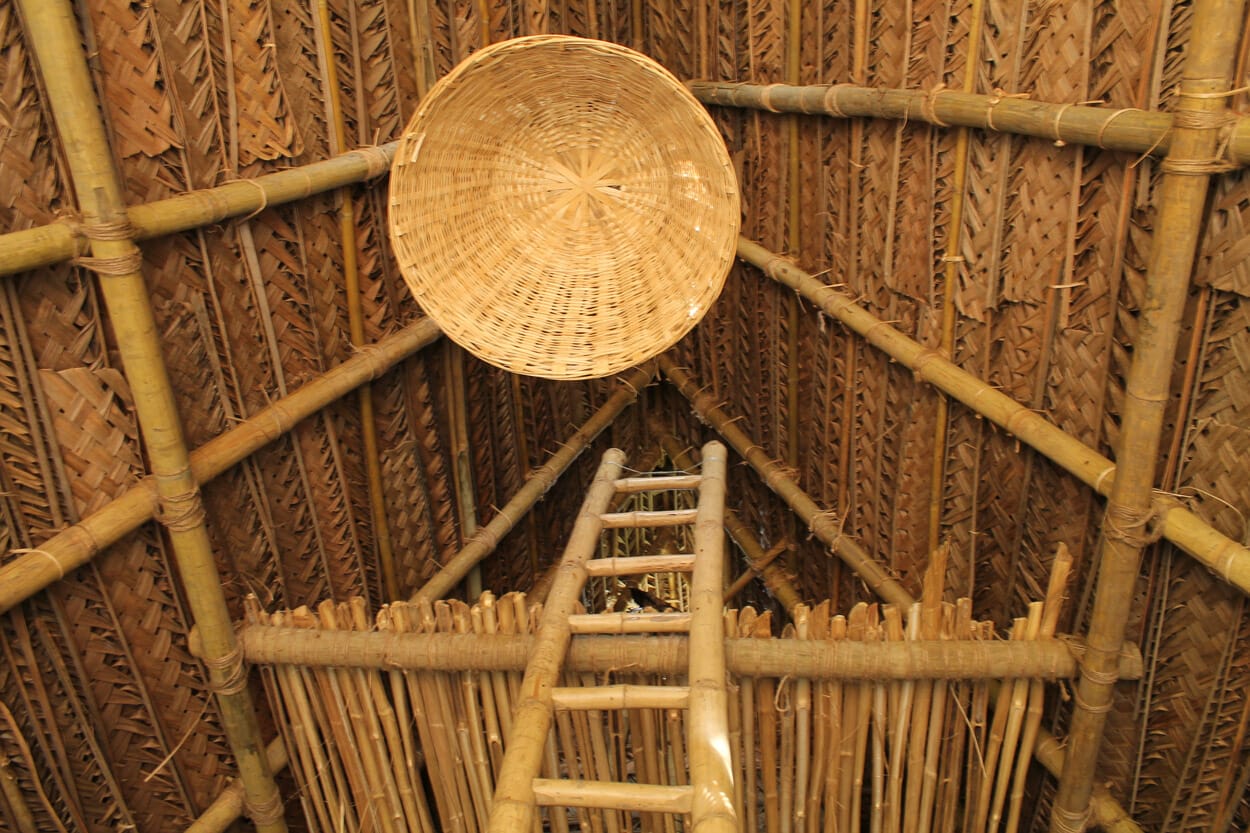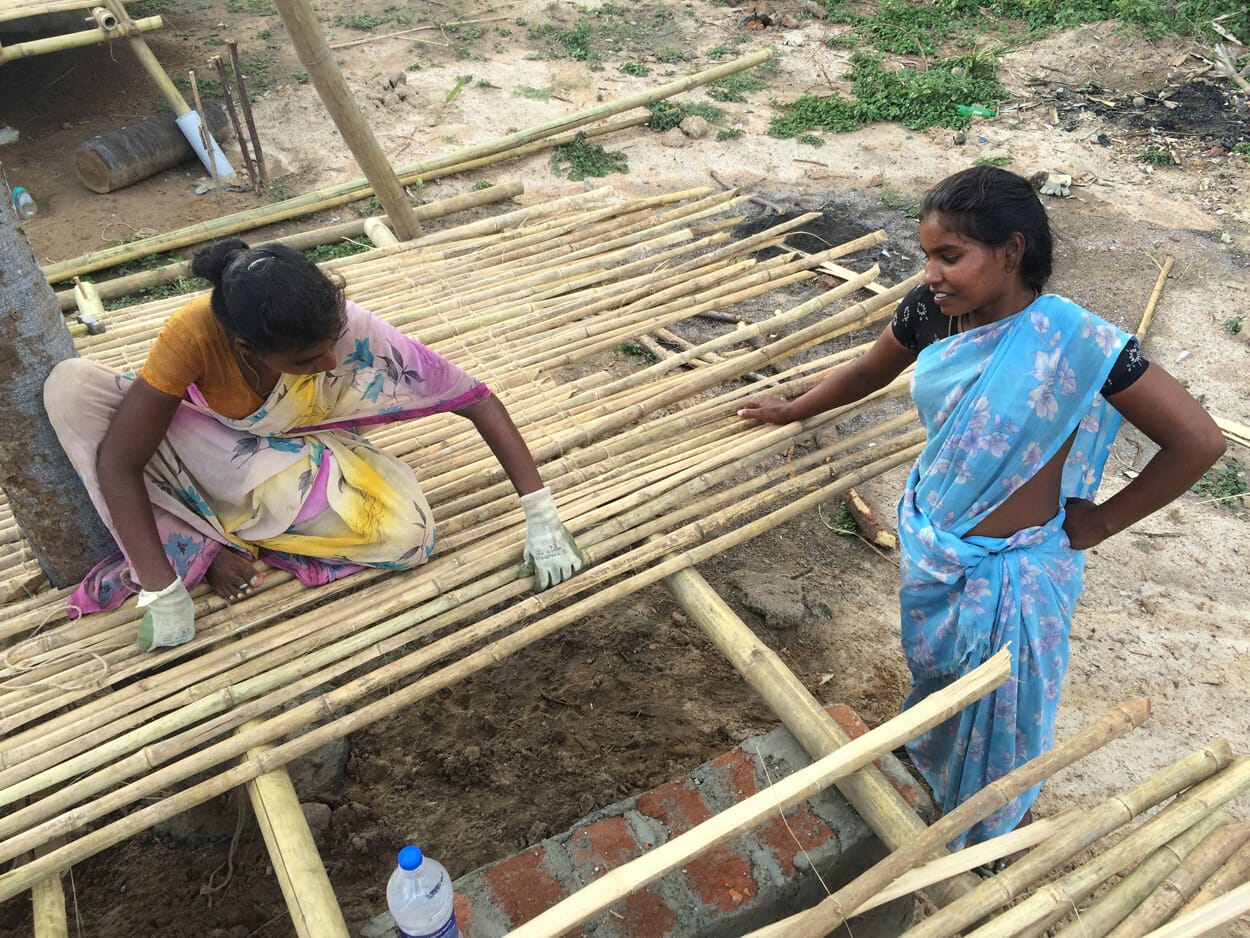Sustainable community construction platform with natural materials to combat housing poverty in rural areas and indigenous territories through inclusive participatory design.
The London community is made up of 112 people who live in extreme poverty and whose economic activity is begging and procuring human hair for sale to the hairdressing industry. In November 2015, a flood caused by torrential rains and the overflow of a local dam affected the precarious living spaces they had, leaving existing buildings in a state of high-risk degradation and other families without any type of housing.
By designing with local elements such as bamboo and handcrafted woven palm tiles, solutions for easy implementation, expansion and maintenance were sought; in turn, housing and community spaces should be able to be built by the community itself and 10 international volunteers. The house built has 35 m2 open plan.
The construction is supported by a borax-treated bamboo structure that forms a structural network through stringers and poles of the same material joined by bamboo nails and coconut rope ties and four palm poles. In turn, the vertical elements function as isolated footings with a concrete protection and a plastic tube embedded in the ground. Heavy-gauge bamboo poles raise a lightweight slab of young bamboo and concrete supported by a brick foundation line down the middle, which in turn acts as an access stairway.
The structure allows the passage of water under the house without affecting the interior; This also encourages a circulation of wind that lowers the internal temperature of the house. With a total height of 4.9 m, a mezzanine was built for living or storage space. Being covered with woven Palm Tile, heat is easily dissipated, since the extreme climate regularly raises the temperature to 43 degrees Celsius and this can be replaced at a very low cost or by own means.
Thanks to the lightness of bamboo, any person or family can carry and build in a simple way, the structure can be easily expanded towards the front and back ends, thus allowing the progressive growth of the house at a very low cost.
- Architect: Programa VACA


